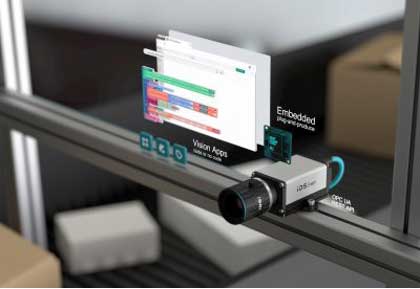Update for the AI system IDS NXT: cameras can now also detect anomalies.

In quality assurance, it is often necessary to reliably detect deviations from the norm. Industrial cameras have a key role in this, capturing images of products and analyzing them for defects. If the error cases are not known in advance or are too diverse, however, rule-based image processing reaches its limits. By contrast, this challenge can be reliably solved with the AI method Anomaly Detection. The new, free IDS NXT 3.0 software update from IDS Imaging Development Systems makes the method available to all users of the AI vision system with immediate effect.
The intelligent IDS NXT cameras are now able to detect anomalies independently and thereby optimize quality assurance processes. For this purpose, users train a neural network that is then executed on the programmable cameras. To achieve this, IDS offers the AI Vision Studio IDS NXT lighthouse, which is characterized by easy-to-use workflows and seamless integration into the IDS NXT ecosystem. Customers can even use only “GOOD” images for training. This means that relatively little training data is required compared to the other AI methods Object Detection and Classification. This simplifies the development of an AI vision application and is well suited for evaluating the potential of AI-based image processing for projects in the company.
Another highlight of the release is the code reading function in the block-based editor. This enables IDS NXT cameras to locate, identify and read out different types of code and the required parameters. Attention maps in IDS NXT lighthouse also provide more transparency in the training process. They illustrate which areas in the image have an impact on classification results. In this way, users can identify and eliminate training errors before a neural network is deployed in the cameras.
IDS NXT is a comprehensive AI-based vision system consisting of intelligent cameras plus software environment that covers the entire process from the creation to the execution of AI vision applications. The software tools make AI-based vision usable for different target groups – even without prior knowledge of artificial intelligence or application programming. In addition, expert tools enable open-platform programming, making IDS NXT cameras highly customizable and suitable for a wide range of applications.
More information: www.ids-nxt.com
About IDS Imaging Development Systems GmbH
IDS Imaging Development Systems GmbH is a leading manufacturer of industrial cameras and pioneer in industrial image processing. The owner-managed company develops modular concepts of powerful and versatile USB, GigE and 3D camera as well as models with Artificial Intelligence (AI). The almost unlimited range of applications covers multiple non-industrial and industrial sectors of equipment, plant and mechanical engineering. The AI image processing platform IDS NXT is extremely versatile and opens up new areas of application where classic rule-based image processing reaches its limits. With visionpier, IDS operates an online marketplace that brings together suppliers of ready-made image processing solutions and interested end customers in a targeted manner.
Since its foundation in 1997 as a two-man company, IDS has developed into an independent, ISO and environmentally certified family business with around 350 employees. The headquarters in Obersulm, Germany, is both a development and production site. With branches and representative offices in the USA, Japan, South Korea, the UK, France and the Netherlands, the technology company is also globally represented.
IDS Imaging Development Systems Inc.
92 Montvale Ave, Suite 4750
Stoneham, MA 02180, USA
Sales –
Phone: +1 (781) 787-0048
usasales@ids-imaging.us
www.ids-imaging.us
IDS Imaging Development Systems GmbH
Dimbacher Str. 10
74182 Obersulm
Germany
Claudia KIRSCH
Phone: +49 7134 96196 0
c.kirsch@ids-imaging.de
www.ids-imaging.com
In this episode, I sat down with Beejan Giga, Director | Partner and Caleb Emerson, Senior Results Manager at Carpedia International. We discussed the insights behind their recent Industry Today article, “Thinking Three Moves Ahead” and together we explored how manufacturers can plan more strategically, align with their suppliers, and build the operational discipline needed to support intentional, sustainable growth. It was a conversation packed with practical perspectives on navigating a fast-changing industry landscape.